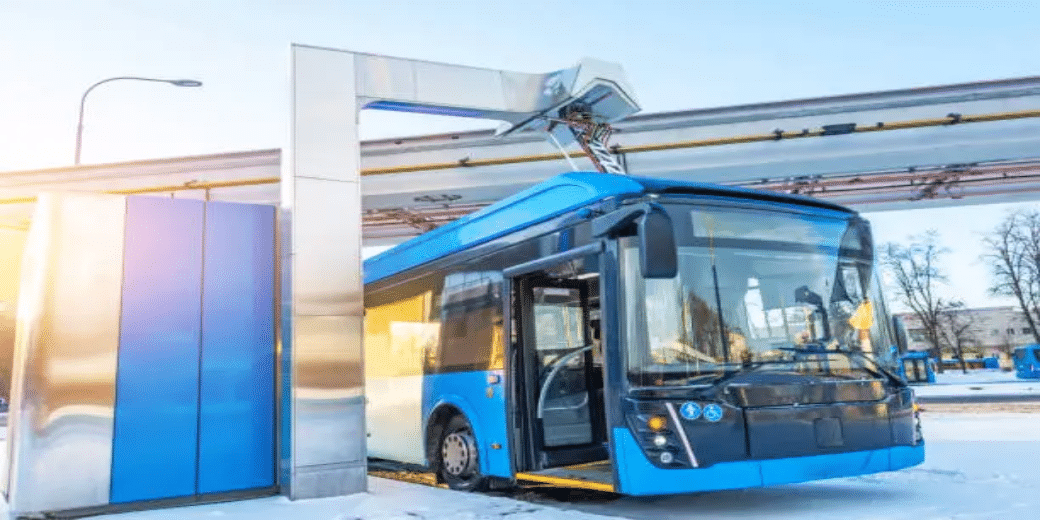Centre framing incentives to lead private bus operators to the EV route
The bulk of the public transportation system in the country is critically dependent on private buses which comprise about 90% of the buses hitting the roads in the country.

To push adoption of electric vehicles (EV) in India that is failing to pick up pace despite the government’s efforts, the Centre is framing an incentive scheme to lead private bus operators to take the EV route, the Business Standard reported quoting a senior NITI Aayog official.
The Ministry of Heavy Industries and the Ministry of Road Transport and Highways have put their heads together to frame this scheme.
The bulk of the public transportation system in the country is critically dependent on private buses which comprise about 90% of the buses hitting the roads in the country. Due to their sheer numbers, the shift of these vehicles to the EV route is extremely significant to reduce the greenhouse gas imprint in the country.
Incidentally, the number of EV sales as a fraction of the total sale of vehicles in the country is insignificant and lags the key markets of the world. Despite the government focussing on FAME (Faster Adoption and Manufacturing of Hybrid & Electric Vehicles) subsidies since April 2019, the EV penetration in the country continues to languish at a mere 1.5% in 2022, revealed a study by ICRA.
Right now, buses of the state transport undertakings come under the FAME scheme.
“We have sought detailed demand requirements from bus manufacturers, operators, and their respective associations. The final decision will be made after considering their recommendations and demands,” Sudhendu J Sinha, adviser (infrastructure connectivity-transport and electric mobility), NITI Aayog told the newspaper.
The focus of the exercise would be a part of the grand drive to raise EV penetration to 40% by 2030 and eventually attain carbon neutrality by 2070.
However, it is yet unclear whether the new scheme in the works would be a one for EVs or an independent initiative.
The FAME-II scheme allows a subsidy of Rs. 20,000 per kWh for e-buses. However, there is a ceiling of 40% of the vehicle’s cost and a maximum ex-factory price limit of Rs 2 crore. The approximate size of the battery in an e-bus is 250 kWh.
The government claims that this subsidy helps manufacturers trim the cost of e-buses by around Rs 50 lakh. Without subsidy an e-bus costs more than Rs 1.2 crore. This figure is about five times the cost of a diesel bus.
Despite the incentives, the high cost of e-buses, absence of proper finance and ill financial health of state transport undertakings have deterred original equipment manufacturers from participating in the government’s past tenders. In fact, state-run Convergence Energy Services Ltd (CESL) is reportedly toying with the idea of walking out of a dry lease tender for 4,675 e-buses due to lukewarm response from OEMs. This was announced on January 4.
To allay apprehensions of OEMs bidding for state tenders, the government announced a “payment security fund” of Rs 4,126 crore. The objective: support 38,000 e-buses belonging to state transport undertakings.
However, till now there is no incentive scheme for private bus operators.
The number of e-buses sold in India remains poor. Since 2014 only 4,855 e-buses were sold. This accounts for an abysmal 1.1% of the total number of 430,669 buses.
Worse, the figure is below the global e-bus average penetration rate of 4.5%, as stated in the International Energy Agency’s Global EV Outlook 2023 report. Last year worldwide 66,000 e-buses were sold. Most of these busses were accounted for by one country.
China is the undisputed leader in the e-bus market and accounts for over 80% of global e-bus sales in 2022.
Download Money9 App for the latest updates on Personal Finance.
Related
- Reduce your premium with health insurance deductibles
- LIC may sell properties, land to net over $7billion
- Get ready to pay for the mobile number!
- What are IRDAIs latest norms saying on moratorium and waiting period?
- Labour codes may be priority reform area in first 100 days of new govt
- LPG price cut: OMCs cut commercial cylinder prices ahead of elections

